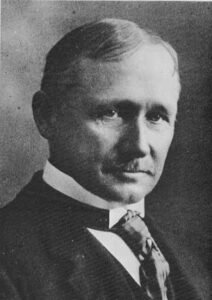Contribution of FW Taylor in Management

In these notes, we will explain the key points of Taylor’s Theory, its advantages and disadvantages, and how these principles are still used today in one of the world’s most successful businesses, McDonald’s.
Overview of Taylor’s Theory
Frederick Winslow Taylor was an American engineer and management consultant. He started the concept of scientific management, also called Taylorism. Taylor’s theory was based on a few simple ideas:
- Employees are motivated by pay.
- Science can increase efficiency and productivity.
Taylor believed workers should be given just one task and focus on mastering it. He famously said, “In the past, the man has been first; in the future, the system must be first.” This means that Taylor thought systems were more important than the individual workers, and anyone who didn’t want to be productive could easily be replaced.
Scientific Management: Key Concepts
The main idea of Taylor’s theory was that you could use science to make jobs simpler and increase productivity. His method included:
- Time and Motion Study: Managers would observe and break down tasks, timing how long each part took. They would then find the quickest way to do each task and apply this method across the entire workforce.
- Task Specialization: Instead of one worker completing a whole job, tasks were divided into small parts. For example, in a car factory, one worker would just fit the wheels, another would fit the steering wheel, and so on.
Taylor believed that once the best way to do a task was identified, employees needed to be motivated to do it efficiently. His method of motivation was pay: the more productive you were, the more you earned. He also believed that if employees didn’t meet the standards, they should be fired or given low wages, forcing them to leave.
Scientific Management at McDonald’s
McDonald’s adopted Taylor’s scientific management approach when the McDonald brothers redesigned their restaurant to increase productivity. They called this system the Speedy System, which focused on making food faster, cheaper, and easier.
- Jobs were broken down into small tasks. For example, one worker would fry the burgers, another would prepare the buns, and another would add pickles and sauces.
- This approach allowed McDonald’s to operate efficiently and has helped it become the world’s largest fast-food franchise.
Today, McDonald’s still uses Taylorism principles:
- Standardization: Every McDonald’s looks the same and follows the same procedures, ensuring consistency in the food and customer experience.
- Consistency: No matter where you are in the world, a Big Mac from McDonald’s will taste the same.
- Low-Skill Jobs: The work is broken down into smaller tasks, so employees don’t need advanced skills to perform them.
Advantages and Disadvantages of Taylorism
Advantages:
- Increased Productivity: Taylorism led to faster work and higher output.
- Consistency: McDonald’s food is the same everywhere, thanks to a standardized system.
- More Pay for More Work: Employees who were productive earned more money, which encouraged hard work.
Disadvantages:
- Monotonous Jobs: Workers did the same tasks repeatedly without much variety or meaning, leading to boredom.
- Unemployment: As productivity increased, companies could reduce the number of workers, leading to job losses.
- Lack of Initiative: Workers had no room to think creatively or improve the system; they were just following orders.
- Dehumanization: Employees were treated like machines, focused only on completing tasks as quickly as possible.
Conclusion
Taylorism has both positive and negative effects. It has helped businesses improve efficiency, but it has also made jobs monotonous and dehumanized workers. While it still influences businesses like McDonald’s, many companies today have adapted the system to suit modern needs.
This explanation simplifies the main points of Taylor’s theory, using easy-to-understand language suited for an Indian audience.